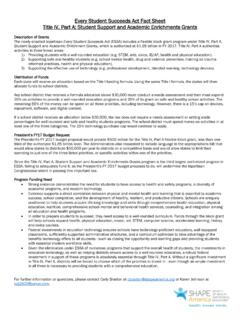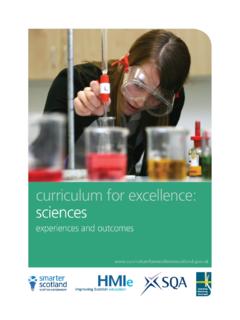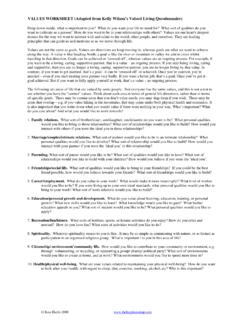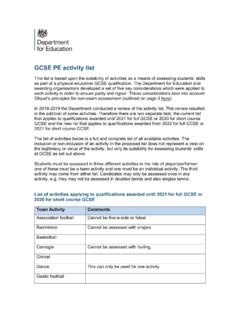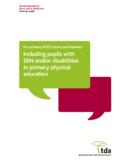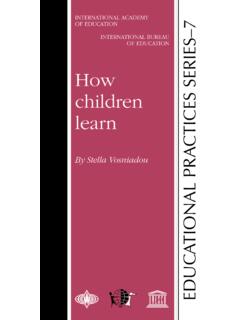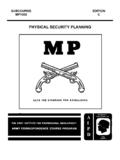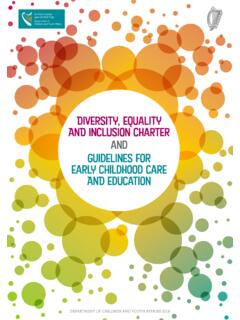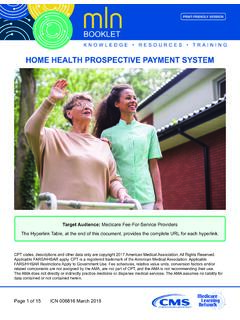Transcription of SHAPE America Grade-Level Outcomes for K-12 Physical …
1 2013, SHAPE America . All rights reserved. For individual use only. For permission to reprint, visit or e-mail Grade-Level Outcomes for K-12 Physical education Grade-Level Outcomes for K-12 Physical education Created by: Curriculum Framework Task Force Lynn Couturier, Task Force Chair, State University of New York College at Cortland Stevie Chepko, Rock Hill, SC Shirley Holt/Hale, Oak Ridge, TN Dan Persse, Blaine, WA Brad Rettig, Lincoln, NE Georgi Roberts, Fort Worth, TX Principal Writers: Lynn Couturier Stevie Chepko Shirley Holt/Hale 1 2013, SHAPE America . All rights reserved. For individual use only. For permission to reprint, visit or e-mail Acknowledgments The task force is indebted to the many professionals who reviewed drafts of the standards and Outcomes and made valuable contributions that strengthened this document.
2 Among these professionals, several deserve special recognition for the thoroughness of their work, including Nancy Schmitz, John Kruse, Tina Hall, Chuck Corbin, and Missy Parker and her graduate students at Northern Colorado University. The task force also appreciates and acknowledges the exceptional foundation for this document built by previous task forces and committees, with the support of the Board of Directors of the National Association for Sport and Physical education . These groups include the 1995 Standards and Assessment Task Force, the Second Edition Writing Committee and the 2010 Exploratory Curriculum Framework Task Force: Derrick Mears, Chair, Western Washington University Meggin DeMoss, Rose Hill, KS Shaunna McGhie, Utah Valley University Peter Rattigan, Rowan University Suggested citation for this document: SHAPE America Society of Health and Physical Educators.
3 (2013). Grade-Level Outcomes for K-12 Physical education . Reston, VA: Author. 2013, SHAPE America . All rights reserved. For individual use only. Reproducing this work in any form by any electronic, mechanical or other means including photocopying or storing in any information-retrieval system is expressly forbidden without written permission from SHAPE America . To request permission to reprint or copy all or portions of this work, visit or e-mail National Standards & Grade-Level Outcomes for K-12 Physical education Find even more guidance on using the new National Standards in National Standards & Grade-Level Outcomes for K-12 Physical education ( SHAPE America , 2014).
4 Designed as a tool for Physical educators at all levels, this book offers guidance on planning curricula, designing units and lessons, tracking student progress across grades and more. Purchase your copy at 2 2013, SHAPE America . All rights reserved. For individual use only. For permission to reprint, visit or e-mail National Standards for K-12 Physical education The goal of Physical education is to develop physically literate individuals who have the knowledge, skills and confidence to enjoy a lifetime of healthful Physical activity. To pursue a lifetime of healthful Physical activity, a physically literate individual: Has learned the skills necessary to participate in a variety of Physical activities.
5 Knows the implications and the benefits of involvement in various types of Physical activities. Participates regularly in Physical activity. Is physically fit. Values Physical activity and its contributions to a healthful lifestyle. * * adapted from Moving into the future: National standards for Physical education (2nd ed.), National Association for Sport and Physical education , 2004. Reston, VA: Author. Standard 1. The physically literate individual demonstrates competency in a variety of motor skills and movement patterns. Standard 2. The physically literate individual applies knowledge of concepts, principles, strategies and tactics related to movement and performance.
6 Standard 3. The physically literate individual demonstrates the knowledge and skills to achieve and maintain a health-enhancing level of Physical activity and fitness. Standard 4. The physically literate individual exhibits responsible personal and social behavior that respects self and others. Standard 5. The physically literate individual recognizes the value of Physical activity for health, enjoyment, challenge, self-expression and/or social interaction. 3 2013, SHAPE America . All rights reserved. For individual use only. For permission to reprint, visit or e-mail Outcomes for Elementary School Students (K Grade 5) By the end of Grade 5, the learner will demonstrate competence in fundamental motor skills and selected combinations of skills; use basic movement concepts in dance, gymnastics and small-sided practice tasks; identify basic health-related fitness concepts; exhibit acceptance of self and others in Physical activities; and identify the benefits of physically active lifestyle.
7 Note: Swimming skills and water-safety activities should be taught if facilities permit. Standard 1 Kindergarten Grade 1 Grade 2 Grade 3 Grade 4 Grade 5 The physically literate individual demonstrates competency in a variety of motor skills and movement patterns. Locomotor Hopping, galloping, running, sliding, skip- ping, leaping Performs locomotor skills (hopping, gal-loping, running, sliding, skipping) while maintaining balance. ( ) Hops, gallops, jogs and slides using a mature pattern. ( ) Skips using a mature pattern. ( ) Leaps using a mature pattern. ( ) Uses various loco- motor skills in a variety of small- sided practice tasks, dance and educa-tional gymnastics experiences.
8 ( ) Demonstrates mature patterns of locomotor skills in dynamic small-sided practice tasks, gymnastics and dance. ( ) Combines locomotor and manipulative skills in a variety of small-sided practice tasks/games environ- ments. ( ) Combines traveling with manipulative skills for execution to a target ( , scoring in soccer, hockey and basketball). ( ) 4 2013, SHAPE America . All rights reserved. For individual use only. For permission to reprint, visit or e-mail Standard 1 Kindergarten Grade 1 Grade 2 Grade 3 Grade 4 Grade 5 Locomotor jogging, running Developmentally appropriate/emerging Outcomes first appear in Grade 2. Developmentally appropriate/emerging Outcomes first appear in Grade 2.
9 Runs with a mature pattern. ( ) Travels showing differentiation be-tween jogging and sprinting. ( ) Travels showing dif- ferentiation between sprinting and run- ning. ( ) Runs for distance using a mature pat- tern. ( ) Uses appropriate pacing for a variety of running distances. ( ) Locomotor Jumping & landing, horizontal plane Performs jumping and landing actions with balance. ( ) Note: This outcome applies to both horizontal and vertical jumping and landing. Demonstrates 2 of the 5 critical ele-ments for jumping and landing in a horizontal plane using two-foot takeoffs and landings. ( ) Demonstrates 4 of the 5 critical ele-ments for jumping and landing in a horizontal plane using a variety of one- and two-foot takeoffs and landings.
10 ( ) Jumps and lands in the horizontal and vertical planes using a mature pattern. ( ) Note: This outcome applies to both hori-zontal and vertical jumping and landing. Uses spring-and- step takeoffs and landings specific to gymnastics. ( ) Note: This outcome applies to both hori- zontal and vertical jumping and landing. Combines jumping and landing pat-terns with loco-motor and manipu-lative skills in dance, educational gym-nastics and small-sided practice tasks and games environments. ( ) Note: This outcome applies to both hori-zontal and vertical jumping and landing. Locomotor Jumping & landing, vertical plane Demonstrates 2 of the 5 critical ele-ments for jumping and landing in a vertical plane.





